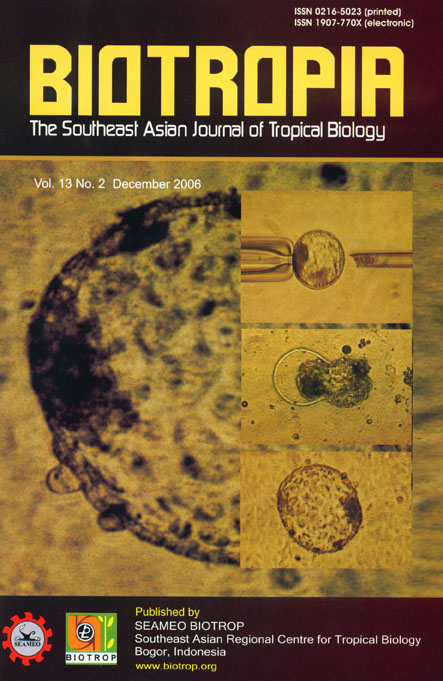
Tags
ALIMENTARY CANAL ANATOMY AND HISTOLOGY OF THE WORKER TERMITE NEOTERMES BOSEI
Content Language : English

As social insects, termites live in a colony that consist of reproductive (drone and queen), and non-reproductive (soldiers and workers) castes. Workers obtain their food directly from wood, humus, and other substances that contain cellulose. The objective of this study was to examine the alimentary canal of the Neotermes bosei workers. Observations of gut transverse section were carried out through the length, perimeter, and area of each alimentary canal region. The results showed that total length of N. bosei alimentary canal was 13.71+1.28 mm. The canal was divided into fore-, mid-, and hindgut which were 24, 28, and 48%, respectively of the gut total length. Two types of alimentary canal epithelial cells were found, i.e. the squamous and transitional cells. Areas covered with thick muscular tissues were crop, proventriculus, and rectum. Proventriculus was characterized with six large dentitions. There was no gastric caeca in N. bosei midgut, which commonly occurred in chewing insect. Secretory cells .were observed at proventriculus and ventriculus regions. Cardiac valve was found at the anterior end of ventriculus. Area with the largest outer perimeter was the rectum pouch. Enteric valve had three internal folds.

This work is licensed under a Creative Commons Attribution-NonCommercial-NoDerivatives 4.0 International License.
